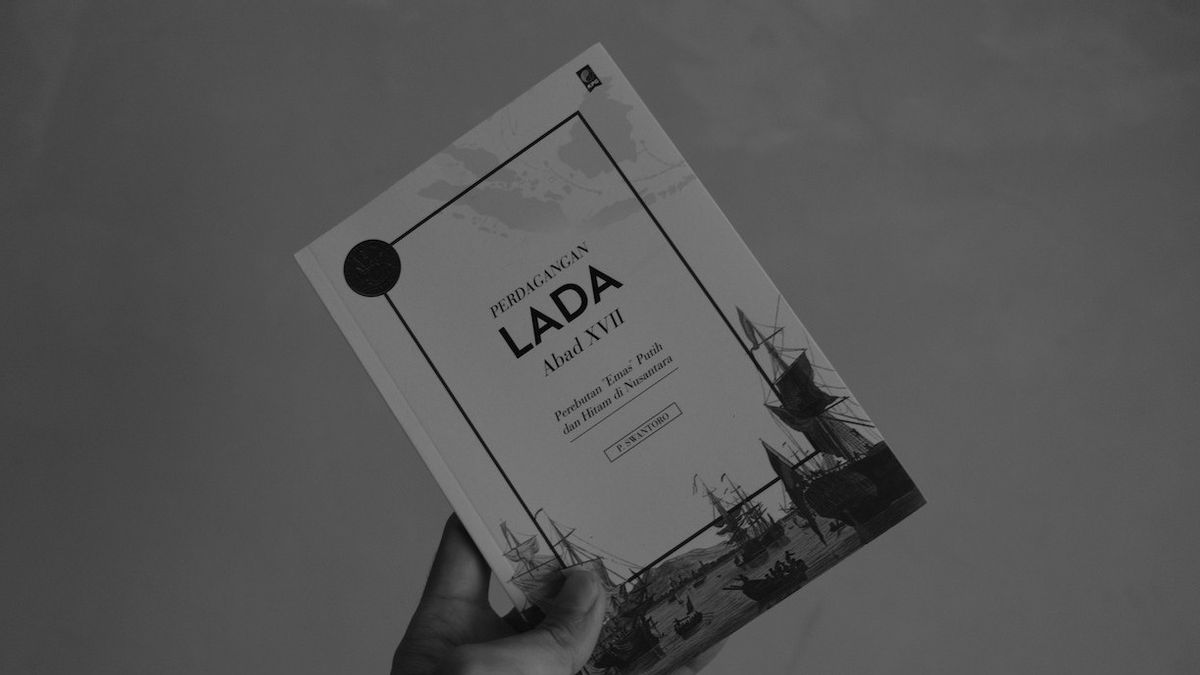JAKARTA - From a long time ago, the appeal of the archipelago's spices was so great. Because of its popularity, the Europeans were hypnotized to come all the way to get spices such as nutmeg, cloves, and pepper.
Interestingly, among the list of the most sought after spices, there is the name pepper or pepper which is at the top of the list. At least, that is what is described in the book Pepper Trade in the XVII Century: The Competition for White and Black "Gold" in the Archipelago (2019).
Through a book written by the historian and senior journalist of Kompas, P. Swantoro, the issue of the popularity of the Indonesian pepper in the eyes of the European community is not an empty word. Because, since long ago, pepper was known as a luxury item, aka to get pepper, Europeans have to spend quite a lot.
At that time, the pepper trade was comparable to the price of gold. For Europeans, the presence of pepper can give a special taste to their daily diet. Which, before the existence of pepper, Europeans only eat meat that is smoked and given salt alone without any appetizing taste.
As a result, through exploration for the sake of exploration of Europeans to Indonesia, pepper was then consumed equally by Europeans. The pepper trade became so lively that the trade activity slowly began to turn into a one-sided wish, as was done by the Dutch in Indonesia.
Obviously this event had a major impact on the history of the nation. Colonization on the basis of a natural resource monopoly cannot be justified.
However, it does not mean that we cannot learn from past events. Moreover, through this fairly thin book, people can have a broad view of the pepper trade in the archipelago.
Some of them start from the value of pepper to European society, pepper and China, the difference between black and white pepper, and pepper that triggered colonialism. Everything is written with the aim so that readers can know the ins and outs of the Indonesian pepper.
Worth the PepperThe value of pepper to Europeans is an undeniable fact. At that time, only the rich and very rich could buy pepper.
That is because the road taken to get to Europe is burdensome for traders, especially in the matter of costly and convoluted processes of having to pay taxes here and there.
As a result, the amount of pepper that could be transported to Europe was not large. Uniquely, that was what made pepper the ideal medium of exchange at that time.
"Pepper is the ideal medium of exchange. It is valuable as if it were made of gold. Traffic fees, rent, taxes, even court fines, can be paid in pepper. Pepper can buy land and islands, pay off mortgages, and buy citizenship and full weaponry, women. beautiful, the most beautiful horse, the most beautiful jewelery, the precious carpet, the fur of rare animals: everything can be had with pepper, "reads page 12.
Pepper and ChinaIn various literacies, it is true that Europeans are the main consumers of pepper. However, in fact in the 15th and 16th centuries, China was the main consumer of Indonesian pepper. The country's export volume is recorded at 50,000 zaks, while the national pepper yields approximately 60,000 zak every year.
Traders from China generally bought pepper from Javanese traders. Due to the large number of exports, it is not surprising that the import duty for pepper is very high, reaching 20 percent.
Black Pepper and White PepperBased on the classification of pepper, in general the pepper sold to China is white pepper, and the pepper sold to Europe is black pepper. This further confirmed China as the main consumer of pepper compared to Europe. Moreover, white pepper is known to be more expensive than black pepper.
The high price lies in the difference in the way it is managed.
"To get black pepper, people pluck the fruit before it is fully ripe, which is when a few of the grains of each cluster have turned yellow. The clusters that have been picked are then shrouded for a few days, so that they wither, and all the grains turn black."
"Unlike black pepper, white pepper demands a slightly more complicated method. To get white pepper, one has to let all the grains cook first. After that, for a week or two, the ripe grains are put in bags, and placed in water. This process is carried out so that the peppercorns become soft, so they can be peeled off easily when rubbed by hand or trampled on. The grain is then washed and dried in the sun to dry, "appears on page 18.
Pepper Triggered ColonialismIn line with its famous pepper, colonialism was born. European countries, previously only traders, began to smell potential profits if they controlled the spice trade in Indonesia. Therefore, the European (Dutch) then tried to monopolize trade with their famous trading partner VOC.
As a result of this monopoly, Malay traders were then prevented, various countries were colonized, and their natural resources were seized. For that, the expression of whoever controls the sea controls trade; whoever controls commerce, controls the richest people of the world, and the world itself has a point.
Presumably, that is what is presented in the book. Although there are also a variety of things that have not been covered much in this review, especially the share of pepper in numbers, the largest pepper producer in the archipelago, as well as the various VOC agreements with the Indonesian authorities.
Detail:
Book Title: Pepper Trade in XVII Century: The Competition for "Gold" White and Black in the Archipelago
Author: P. Swantoro
First Published: 2019
Publisher: KPG (Popular Gramedia Library)
Number of Pages: 107
The English, Chinese, Japanese, Arabic, and French versions are automatically generated by the AI. So there may still be inaccuracies in translating, please always see Indonesian as our main language. (system supported by DigitalSiber.id)













